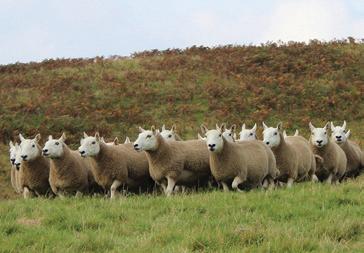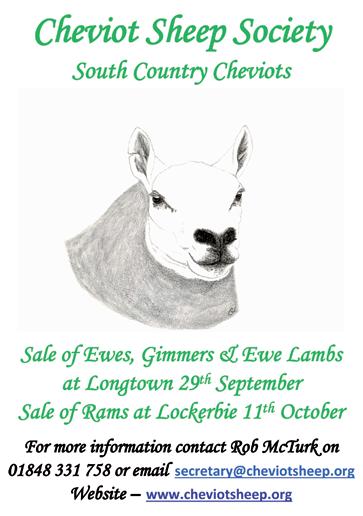
6 minute read
Scottish Government
Farming support payments
By Mairi Gougeon
Advertisement
The COVID-19 pandemic and impacts of Brexit continue to make this an incredibly challenging time for Scotland’s farming community.
Financial stability is more critical than ever, which is why I am delighted that we have delivered improved performance across all scheme payments in 2020 compared to 2019.
We have paid more than half a billion pounds of farming support payments ahead of target and, in many cases, months before we did so in the previous year.
A total of 99.5% of Basic Payment Scheme, Greening and Young Farmer funds were paid by the end of June, with the 95.24% target having been met by the end of February – four months earlier than the previous year.
The Scottish Suckler Beef Support Scheme, Upland Sheep Support Scheme and the Less Favoured Areas Support Scheme also delivered more than 99% of payments by the end of June.
Meeting these targets during a global health pandemic is a huge achievement. Working from home, our teams have ensured that CAP payments are made swiftly and the Scottish Government will continue do everything it can to support farmers and crofters as we gradually and safely move out of lockdown.
Our approach has been to focus on the Single Application Form (SAF) in order to deliver payments at volume and get the industry paid as soon as possible.
I would like to thank everyone who has supported this process, helping us provide our farmers and crofters with much-needed certainty, clarity and above all else, financial stability.
Earlier this year we set out our timetable for when we aim to start making payments through our Payment Strategy for 2021, providing financial support and certainty needed to continue their work and support our wider rural economy. It is important to note that we set this strategy with confidence that we will meet these timelines but there are some risks to delivery that remain. But we will do everything we can to ensure farmers and crofters get their support payments on time, as we have done this year.
sheep SCOPS launches Code of Practice to ensure safe and effective sheep dipping
A new Code of Practice has been launched by the Sustainable Control of Parasites in Sheep (SCOPS) group, in conjunction with the National Association of Agricultural Contractors (NAAC), to ensure access to the best advice on effective treatment of sheep scab with organophosphate (OP) sheep dip, minimising risks to users and the environment. Confrmation of resistance in sheep scab mites to the injectable macrocyclic lactone (ML) scab treatments, coupled with increasing concern that the use of these products is accelerating resistance to the MLs in gut-worm populations, means more and more sheep farmers have been turning to OP dipping for the treatment of sheep scab.
In contrast, the number of farmers with their own dipping facilities has continued to fall, due to tighter regulation of the purchase, use and disposal of OP dipwash. This means they have increasingly been turning to professional mobile dipping contractors – highlighting the need for support to those service providers.
Refecting the cross-industry reach of the SCOPS group, the new code has been developed by in conjunction with a number of industry partners, and is for everyone involved in the dipping process – from prescribers through to the end users on farm.
Phil Stocker, National Sheep Association (NSA) Chief Executive, highlights why such partners viewed the iniative as being of such importance. He says: “If we are to safeguard the future of OP dips against the risk of scab mites developing resistance to the dip and protect the people involved and the environment, we must ensure dipping is carried out properly. This code, has the backing of organisations
throughout the industry and offers reliable and responsible guidance to all those involved in mobile dipping, including farmers, prescribers and dippers.”
Bryan Lovegrove of the Animal Health Distributors Association (AHDA) supports this view. He says: “The code brings clarity and understanding to what is required in the safe storage, prescribing and use of OP dips by both contractors and sheep farmers. OP dip is a vital treatment against sheep scab and the code will encourage best practice.”Stephen Dawson, Animal Medicines Training Regulatory Authority (AMTRA) Secretary General, adds: “All sheep medicines, including OP dips, must be prescribed and used responsibly. AMTRA supports this initiative, which will enhance standards and ensure OP dip used by professional contractors. It should be read by all Registered Animal Medicine Advisors (RAMAs) and others involved in prescribing OP dips so that they can play their part in ensuring OP is used correctly”.
Jill Hewitt, NAAC Chief Executive, says: “This code will help sheep farmers and dipping contractors work in partnership to ensure high standards are always met. Mutual agreement is vital on sourcing dip, siting the mobile dip and the disposal of the used dip to ensure the whole job is done safely, legally and without harm to the environment. A simple written agreement is recommended so that everyone is clear of their responsibilities.”
Mark Cokayne, Bimeda UK General Manager, commented: ”As a manufacturer of OP dip, we are delighted to support the new code. It represents signifcant progress in the fght against sheep scab in the UK and is a positive step towards protecting the effcacy of the only available active against which sheep scab mites have currently demonstrated no resistance, while also ensuring human and animal welfare and safety.”
The Code of Practice is available on the SCOPS website at www. scops.org.uk/external-parasites, where there is also information on the various partners involved in the initiative.
sheep The ’Southie’ at 130!
The Cheviot Sheep Society which looks after the interests of the South Country Cheviot breed, was formed on 27th February 1891 and was the frst breed to have a Flock Book, with Volumes 1 & 2 published in 1893. An abstract from the frst book – “The perfect Cheviot is one which will live and thrive well on the hardest keep” – is as true today as it was then.
The South Country Cheviot, or ‘Southie’ as it is affectionally known, was predominantly bred in the Scottish Borders and Northumberland. It has spread far and wide in the past few years as this hardy and versatile native breed offers new opportunities and multiple proftable routes to market for commercial farmers.
More than 20% of rams forward at last year’s Annual Sale at Lockerbie went to Wales, others sold as far south as Devon & Cornwall and as far north as Sutherland & Caithness which highlights the universal popularity the Southie has in today’s marketplace.
The Cheviot ewe suits the modern ethos of hill farming today with a low input system. At the same time, she will produce hardy lambs which are much sought after both as breeding sheep, as well as producing quality carcases for the meat trade.
To highlight this, a leading breeder sold 819 pure Southie prime hoggs through Longtown Mart in the spring to average £127 at an average weight of 43.7 kgs. These were fattened entirely off grass at a cost of £24/head.
David Smith, farm manager of Middleton of Glasclune, near Blairgowrie in Perthshire is one who has been impressed with the Southie by purchasing 320 in-lamb ewes earlier this year. David who worked in Sutherland with North Country Cheviots, before moving south, choose the Southie when increasing ewe numbers.
The ewes run on a hard heathery hill and David commented – “I have been surprised by their ability to thrive on the poor ground, lamb with little assistance and produce plenty of milk from very little in the way of inputs. Ewes have a maternal instinct as good or better than any other sheep I have worked with.”
This has been proven by his frst draw of lambs selling straight off their mothers, weighing 40.5 kgs and selling for £98.00 at Stirling in the frst week of August. David fnished by saying – “At the end of the day, you have to like the look of what you are working with, and we do.”











